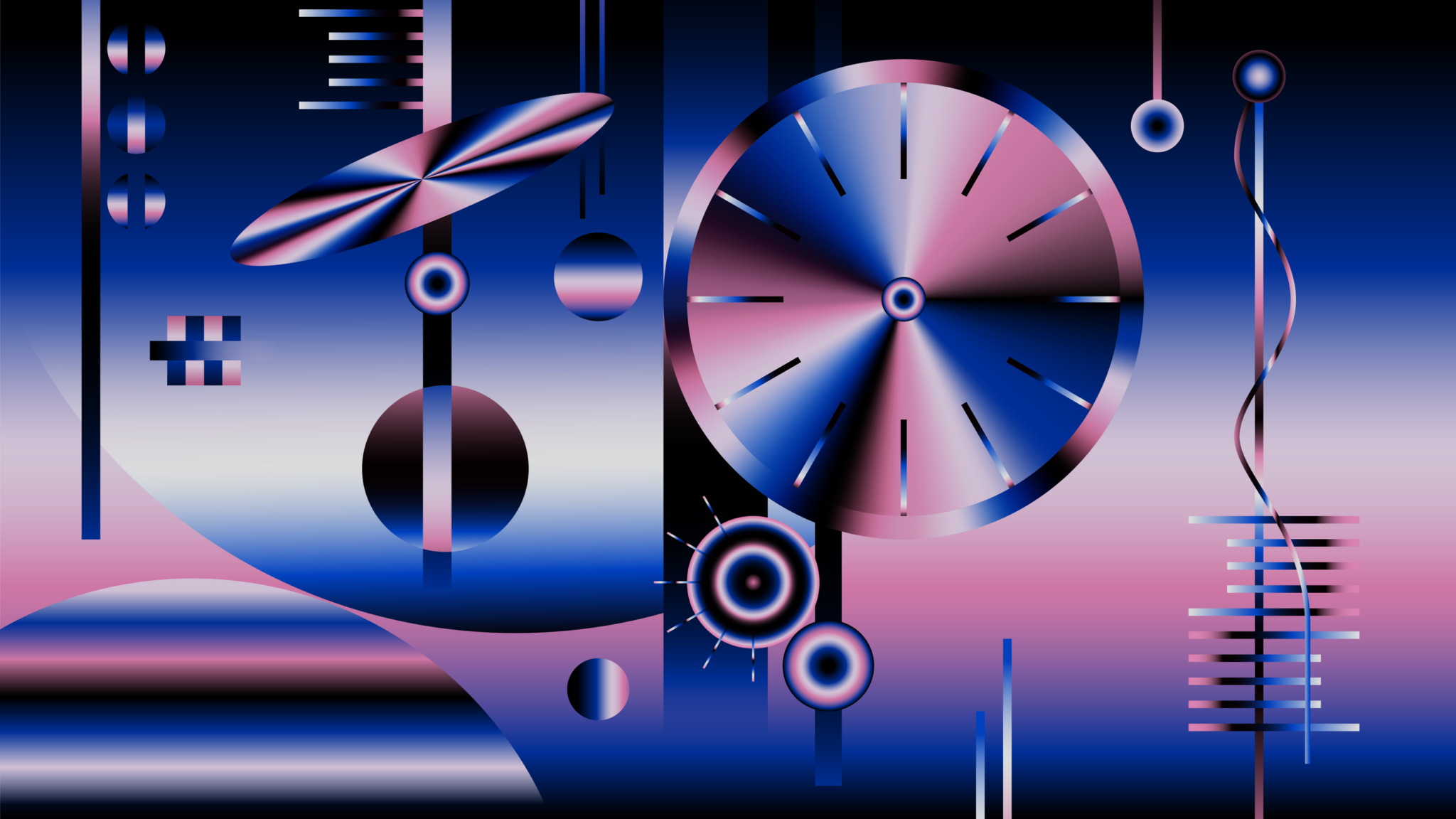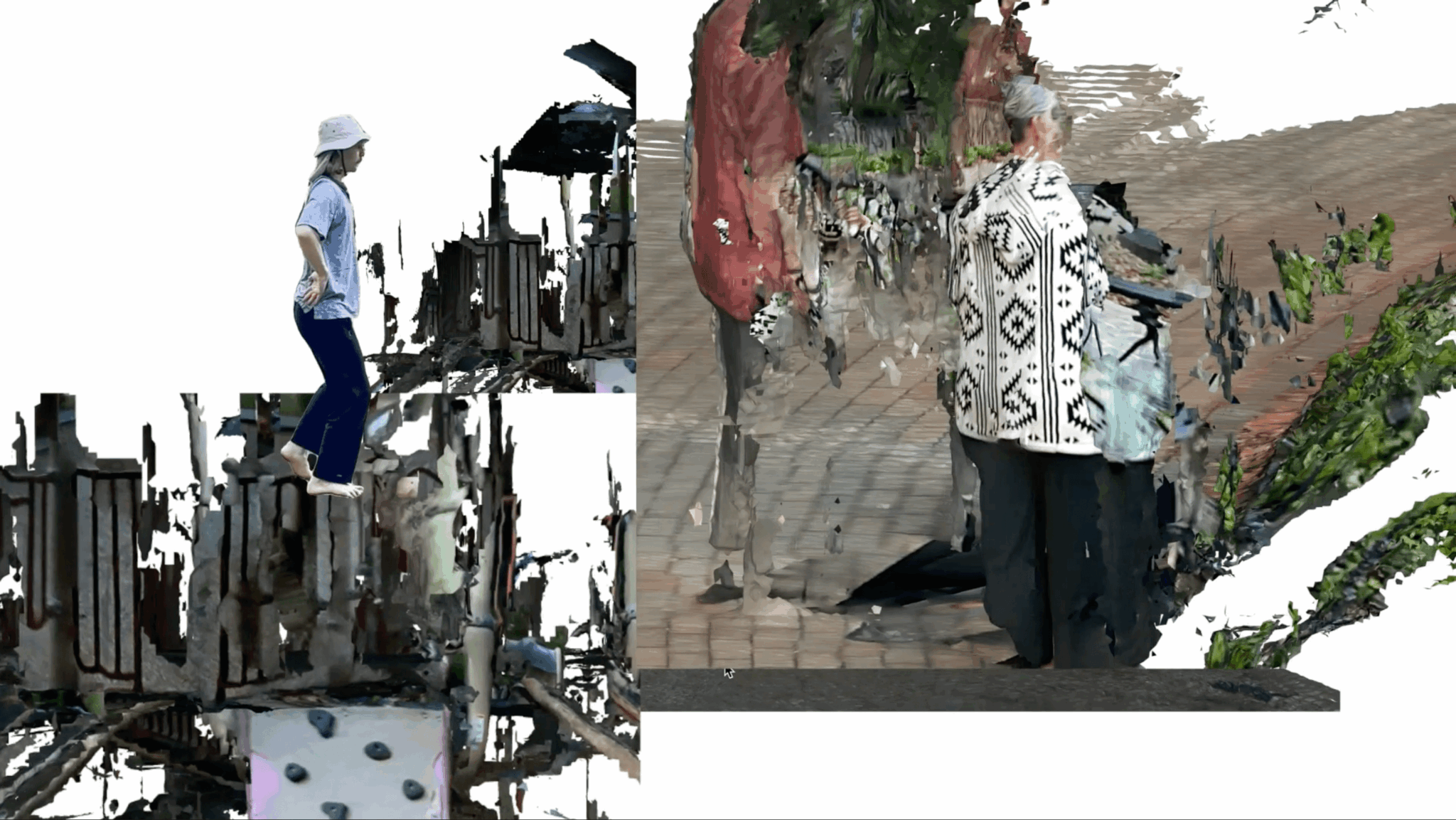We recently connected with Junjie Pan and have shared our conversation below.
Junjie, thanks for joining us, excited to have you contributing your stories and insights. What’s been the most meaningful project you’ve worked on?
One of the most meaningful projects I’ve worked on is In My Daily Life — a motion piece that examines the gradual breakdown of everyday perception under the repetition of daily routines, sensory desensitization, and technological mediation.
This was my thesis project for the M.A. in Motion Media Design at SCAD. For this final piece, I deliberately chose not to follow industry trends, but instead to create something grounded entirely in personal experience. It also served as a comprehensive reflection and synthesis of what I had learned throughout my time at SCAD — particularly in terms of visual structure, rhythm control, and compositional language in motion design.
The project began during a period of psychological fragmentation. I found myself in a state of over-observation and emotional detachment, as if the structure of my daily life was entering a slow collapse. In response to this internal breakdown, I attempted to construct a rational visual order using fixed compositions and diagrammatic typography, mimicking the format of instruction manuals. Yet that constructed order gradually unravels — through glitch effects, disjointed subtitles, looping footage, and structural distortions — all visual mechanisms meant to externalize my experience of perceptual instability and temporal dissonance.
This project was significant not only as a formal experiment, but also because it marked the first time I honestly attempted to document what cognitive collapse feels like — not through narrative, but through fractured visual experience. It represented a personal shift: moving away from self-censorship and toward confronting emotional reality through motion design.


As always, we appreciate you sharing your insights and we’ve got a few more questions for you, but before we get to all of that can you take a minute to introduce yourself and give our readers some of your back background and context?
About Me, My Work & Creative Philosophy
I started my creative journey in fine art, where I learned to use visuals as a language to express perspectives and emotions — both subjective and objective. I’ve always believed that powerful visual works can evoke complex feelings that words or concepts alone often fail to convey. At the time, I expressed myself primarily through traditional painting — portraits, still lifes, landscapes — but over time, I began to feel increasingly limited by the medium.
Painting gave me a strong foundation, but it also came with a sense of burden and constraint. I’ve always been deeply interested in music, storytelling, and moving picture — and as someone who tends to overthink and overanalyze, I found myself searching for a way to unify my thoughts, fascinations, and need for structured expression. That’s what ultimately led me to design — and more specifically, to motion design.
I pursued an M.A. in Motion Media Design at SCAD, where I discovered that motion design is not just a medium, but a powerful framework for integrating multiple disciplines. I encountered creators from diverse backgrounds, each with different methodologies, and found a community where conceptual thinking, experimentation, and execution could truly coexist.
Today, I work as a motion designer with a background in fine arts and visual communication. I create concept-driven motion pieces that integrate narrative, semiotics, and design systems to shape emotionally resonant experiences. My work turns abstract ideas into structured, moving visuals that are designed not just to be seen — but to be felt and processed.
I’m particularly focused on:
Transforming abstract concepts into communicable visual logic;
Structuring multi-modal elements into cohesive systems;
Building emotionally engaging experiences through rhythm, spatial design, and symbolic language.
I’m also currently exploring how AI can enhance creativity, streamline technical processes, and help foster deeper human connection through design. In a time where tools are evolving rapidly, I believe the irreplaceable value of a designer lies in our unique thinking — the ability to see, synthesize, and build meaning from chaos.
This belief is embodied in my final thesis project, In My Daily Life, which I consider my proudest work to date. It is not just a visual piece, but an intentionally designed experience — built from first-person observations, emotionally resonant details, and creative decisions that mirror my internal world. It examines how repetition, digital mediation, and emotional desensitization fragment our everyday perception, and it attempts to visualize that collapse in structure and form.
What I hope people understand about my work is that it’s never just about aesthetics or trend. My goal is to create experiences — whether personal or commercial — that are deliberate, thoughtful, and emotionally precise. I want to help brands, institutions, or viewers not just see something new, but feel something real.
To me, a motion designer is not someone who simply “makes things move.” A motion designer is someone who transforms every element — time, space, typography, sound — into an intentional medium of experience that speaks to the viewer and stays with them long after it ends.


What’s the most rewarding aspect of being a creative in your experience?
The most rewarding aspect of being an artist or creative is the moment when a complex creative problem — both conceptually and technically — is finally resolved through the act of making. There’s a deep satisfaction in navigating uncertainty, making decisions, and seeing everything align into a coherent visual experience. Even more rewarding is when that experience resonates with the audience — when something you’ve carefully constructed evokes emotion, recognition, or reflection in someone else. That moment of silent connection is what makes the whole process meaningful.


What’s a lesson you had to unlearn and what’s the backstory?
I’ve never believed that creative work needs to satisfy external standards. That said, I do recognize the value of following established patterns — they’re useful for building skills and learning foundational structures. But ultimately, every project — whether personal or commercial — is unique. You have to return to your inner instincts, your intuition, and your unresolved questions, and learn to embrace uncertainty as part of the creative process.
During my time at SCAD and through the making of my thesis project In My Daily Life, I came to understand that truly powerful work often emerges from ambiguity, emotional unrest, and conceptual tension — not from clarity, completeness, or polish at the outset. The value of a piece lies not in how finished it looks, but in how deeply it responds to something real.
Even in client-facing work, I try not to respond in a purely literal way. I believe that beneath the brief, and behind audience perception, there’s always a deeper psychological landscape — unspoken needs, vague emotional undercurrents, latent tensions. Creativity is about entering that uncertain territory, and carving out intentional, meaningful responses. It’s like drawing water from a well — you have to go deep before surfacing with something essential. That’s where real design begins — where it moves beyond decoration and becomes experiential.
Contact Info:
- Website: http://junjiepan.com
- Instagram: https://www.instagram.com/pjj_haha/
- Linkedin: http://www.linkedin.com/in/junjiepan


Image Credits
In My Daily Life / The Disintegration of Time / Daily Objects / Rhythm / Take a Walk at Forsyth Park


